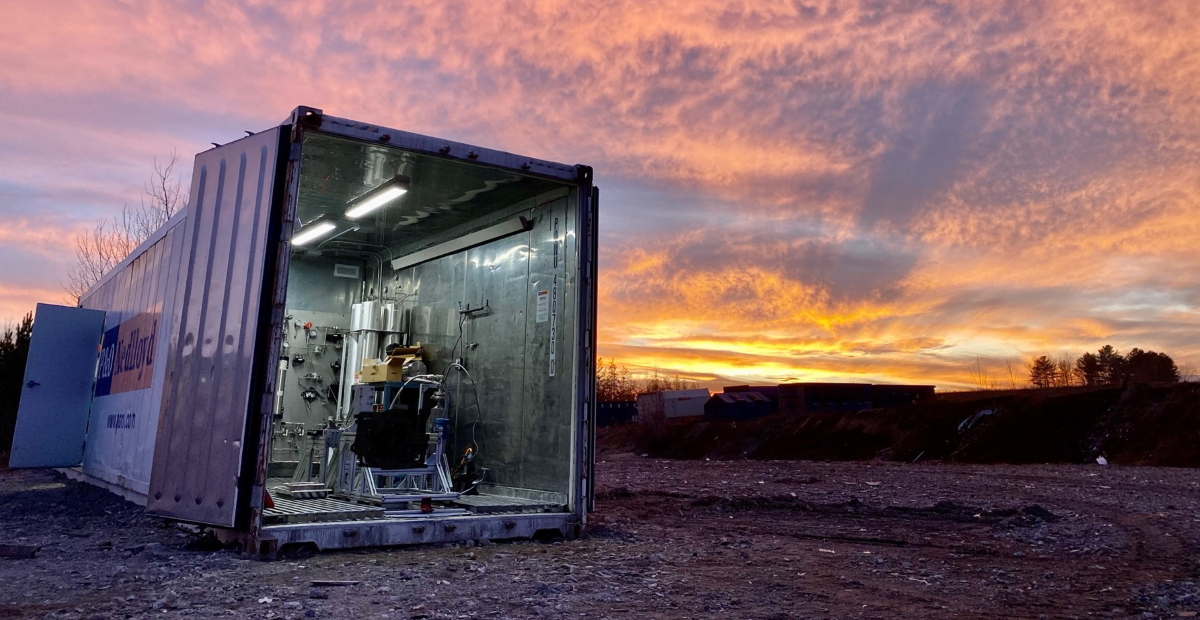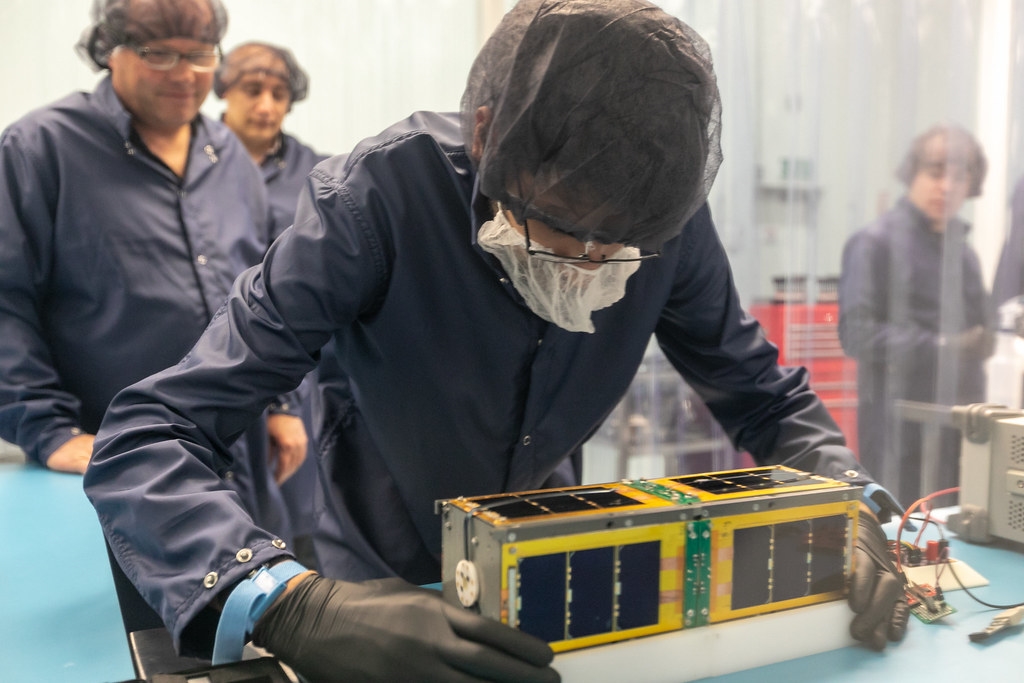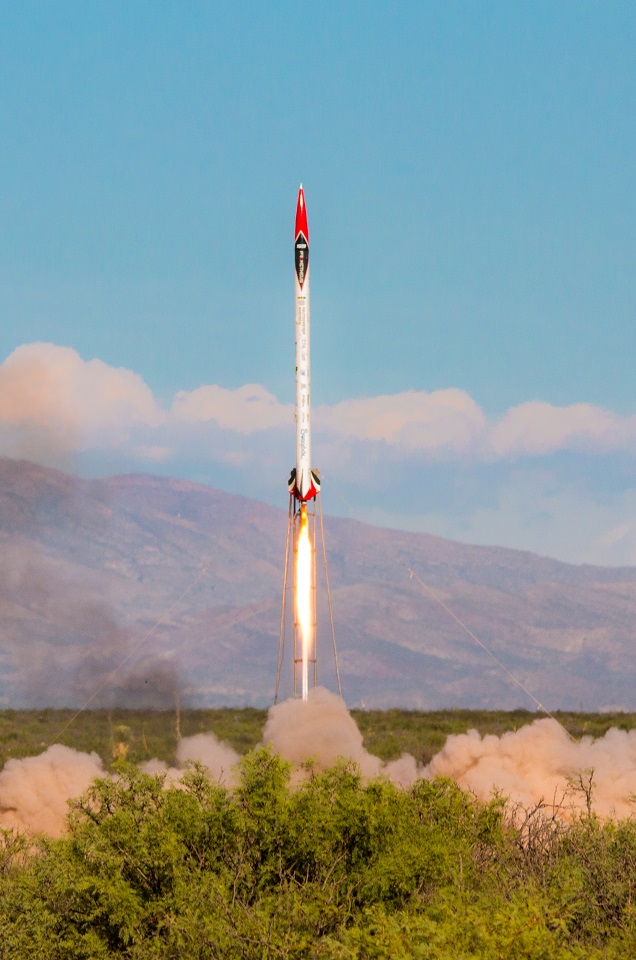Blogue
A "made in Quebec" rocket launcher


Before conducting its first test flight, Reaction Dynamics is testing its hybrid engine for efficacy and safety at a test site in Joliette (Photo: Reaction Dynamics)
Three years after leaving Polytechnique Montréal, Bachar Elzein is preparing for the day when Reaction Dynamics, the company he founded in 2016, will finally put its rocket launcher to the test. The trial launch will bring the startup one step closer to putting nanosatellites and microsatellites into orbit using some of the greenest technology in the industry. Here's the story of a "made in Quebec" commercial rocket.
When Bachar Elzein travelled to the U.S. to compete with Oronos, a tech company affiliated with Polytechnique Montréal, he seized the opportunity to ask representatives from major industry players like SpaceX, Boeing and NASA how he could land an internship with them.
But despite the Oronos team's achievements—including being named category winners in the 2012, 2013 and 2014 editions of the Spaceport America Cup—it was impossible for its members to get a spot with one of the big-name companies. For security reasons, these jobs were, and still are, open to US citizens only.
A boost from Polytechnique Montréal
 Bachar Elzein (Photo : Reaction Dynamics) Bachar Elzein (Photo : Reaction Dynamics) |
The young entrepreneur didn't let himself get discouraged. He was determined to make a name for himself in the industry, one way or another. "Once you've seen a rocket engine up close, you don't want to work on anything else," he explained with a smile.
With this idea in mind, Bachar approached Étienne Robert, a professor in Polytechnique Montréal's Department of Mechanical Engineering in 2015. His goal was to gain a better understanding of combustion dynamics and to work on his projects in a scientific research environment.
"I couldn't have found a better opportunity," said the 31-year-old entrepreneur. "Above all else, Professor Robert is an expert in combustion, and to design a rocket engine, you first need to understand the different types of combustion instabilities and multiphase flows (Editor's note: the movement of solids, liquids and gases) like those typically found in combustion chambers."
The next year, Bachar started Reaction Dynamics while he was still working in Professor Robert's lab. He wanted to put nanosatellites and microsatellites into orbit using a launch vehicle with a payload capacity of 200 kilograms.
The company initially set up shop in the J-Armand Bombardier incubator, located in the building with the same name. The space is now home to Polytechnique Montréal's Entrepreneurship Support Service.
"We definitely gained a lot while we were there," said Bachar. "We got to rub shoulders with Montréal's entrepreneurial ecosystem and we also connected with our first investors."
Today, Reaction Dynamics is based in Saint-Jean-sur-Richelieu and employs roughly 20 people.
A quick look at... small satellites |
|
The miniaturization of electronic components has done more than just make smartphones and laptops lighter. Next generation satellites, which are used for remote monitoring, geolocation and even Internet connectivity, weigh only a few kilograms. In fact, they're classed by weight—like boxers— and each category has its own prefix. There's micro (less than 100 kilograms), nano (less than 10 kilograms), and even pico (less than 1 kilogram). In recent years, public and private companies hoping to send small satellites into space have had to be patient because today's large launchers give priority to big satellites. Bashar believes there's a market for small launch vehicles like the one his team is developing. "We're hoping to offer what is essentially taxi service for the price of a bus ticket," he said. |
Gearing up for their first test flight
 Aliénor Lougerstay (Photo : Oronos Polytechnique) Aliénor Lougerstay (Photo : Oronos Polytechnique) |
The launcher that Bashar's team plans to assemble soon is quite different from SpaceX's Falcon rockets. It's much smaller and uses hybrid propulsion technology.
More specifically, Reaction Dynamics' engine uses a liquid oxidizer and a polymer-based solid fuel. This makes it a safer and greener option than its competitors' engines, according to Aliénor Lougerstay, a Polytechnique Montréal graduate who is the Chief Operations Officer at Reaction Dynamics and the outgoing General Director at Oronos.
"If you look at the various products that go into our propulsion system, our solution emits 60% less CO2 than competitor launchers sending an equivalent payload into orbit," she stated. "We're also hoping to use recycled plastic in our fuel so that we can reduce our environmental footprint and offer the first carbon-neutral launch vehicle."
Reaction Dynamics has already applied for three patents to protect its technology.
The group is now looking at conducting its first test flight in the next few months. This crucial step will help the startup demonstrate its engine capabilities in addition to its ability to guide the rocket's trajectory and manage ground operations.
"There are several critical subsystems in a rocket," said Bachar. "It's a game of compromise and optimization, with no margin for error because once the rocket is launched, there's no going back."
During the same period, the startup hopes to complete a round of financing, which will give it the means to offer commercial launch service. "Once this step is complete, we expect to carry out our first orbital flight within 2 years," said the founder of Reaction Dynamics, adding that he eventually plans to complete 4 to 6 launches per year.
Reaction Dynamics already has financial backing from outside investors and the Canadian Space Agency (CSA), which awarded the company a $1.5 million grant to develop the launch vehicle's combustion chamber.
Learn more
Reaction Dynamics' website
TedX Talk by Bachar Elzein about rocket launchers
Oronos' website
Professeur Étienne Robert expertise
Department of Mechanical Engineering's website







Comments
Commenter
* champs obligatoire